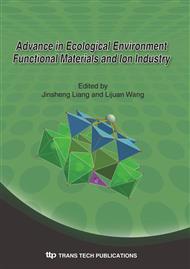p.183
p.189
p.197
p.201
p.207
p.215
p.221
p.227
p.233
Serotype Identification and Drug Sensitive Test of the Pathogenic Escherichia coli
Abstract:
Thirty-eight isolates of Escherichia coli (E.coli) were isolated from chickens either ill or dead suspected with E.coli. These chickens come from chicken breeding farms in the districts of Baoding, Qinhuangdao and Beijing of China. The results of the antibiotics sensitivity test in the thirty-eight isolates to twenty-four kinds of antibiotics show that all isolates have presented antibiotic resistance disparately as well as multiresistance. All isolates are sensitive to Cephalosporins antibiotics and Aminoglycosides antibiotics such as Amikacin, Cefazolin, Cefradine, Cefoperazone and Ceftriaxone. Thirty-eight isolates are extremely resistant to Penicillins antibiotics, Lincomycins antibiotics, Tetracyclines antibiotics and Macrolides antibiotics such as Midecamycine, Lincomycin, Carbenicillin, Tetracycline, Amoxicillin. Antibiotics sensitivity test provides a guidance for antibiotic application and scientific research on poultry farms.
Info:
Periodical:
Pages:
207-213
Citation:
Online since:
January 2010
Authors:
Price:
Сopyright:
© 2010 Trans Tech Publications Ltd. All Rights Reserved
Share:
Citation:


